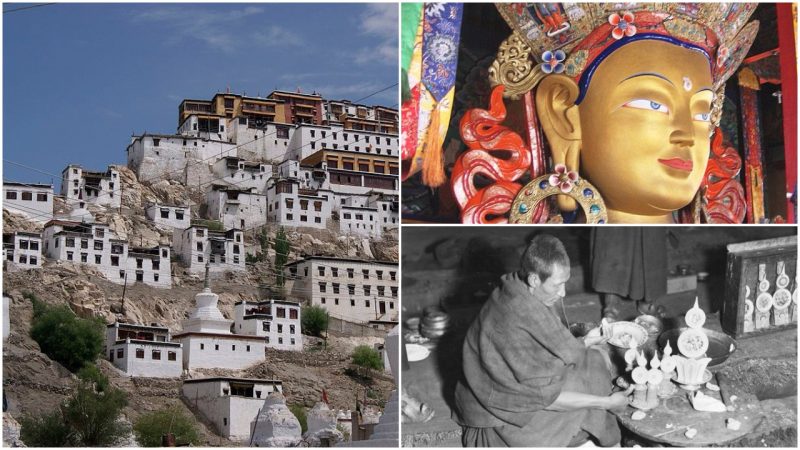During the early fifteenth century, Je Tsongkhapa, a famous teacher of Tibetan Buddhism and founder of the Gelug school, sent six of his students to distant realms of Tibet on a mission in spreading the teachings of the new doctrine; the school was also called “the Yellow Hats.”
To one of his students, Jangsem Sherab Zangpo, he gave a small statue of Amitayus, which contained bone powder and a drop of his own blood. Tsongkhapa instructed him to meet the King of Ladakh and give him a message – that he is seeking help in spreading the doctrine of “the Yellow Hats.”
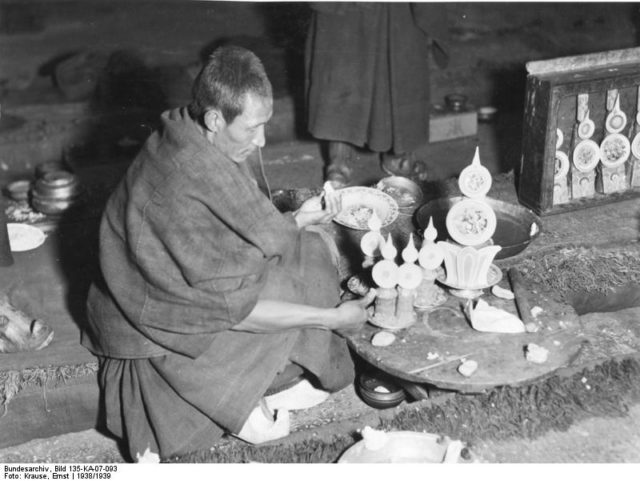
The student found the King and delivered the statue. As the king loved the gift, after the meeting he ordered one of his ministers to help Tsonkhapa’s student to establish a new monastery of the Gelug order in Ladakh. And that’s how a small village monastery called the “Yellow Temple” was founded, but despite all efforts, very few lamas recognized it at first.
A few decades later, the monastic work was continued by Palden Zangpo, a student of Sherab. He decided to build a larger monastery here. According to legend, the teacher and the student were performing a sacred rite near the Yellow Temple, giving torma cake offerings.
As they did this, two crows appeared out of the blue and carried away the ceremonial plate with the torma offerings; they placed it on the other side of the hill. Palden and Sherab went on to look for the torma and they found it placed on a stone in perfect order by the two crows. For Palden, this was a divine sign that the new larger monastery should be built here. The legend is also related to another premonition made by Tsongkhapa, who had foreseen that the new doctrine will flourish once a new larger temple emerges on the right bank of the Indus River. The prediction came true and the name of the monastery would be Thikse, meaning “in perfect order.”
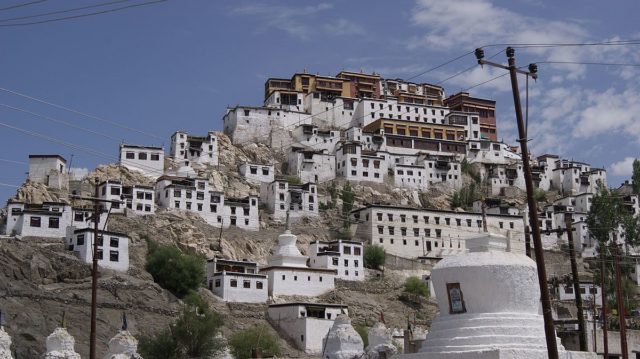
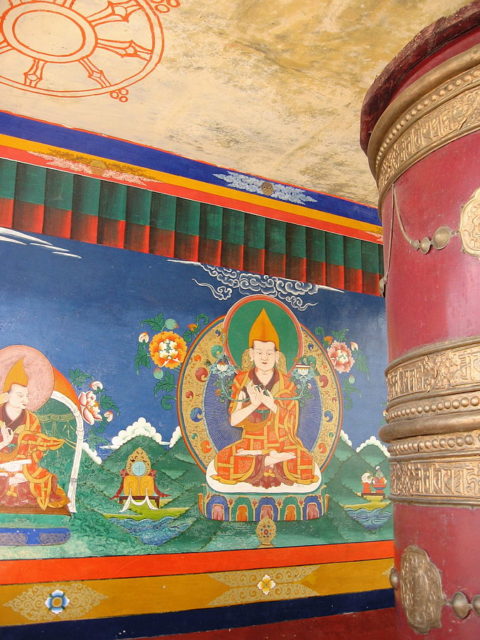
Today, Thikse Monastery is the largest temple structure in central Ladakh. The site is also called ‘Mini Potala’ as it resembles the Potala Palace in Lhasa, Tibet, the former seat of the Dalai Lamas. On the foot of the hill, the complex has a precinct; from there, a flight of steps leads to the main monastery, one of the ten temples that ascend on the hill in order of importance.
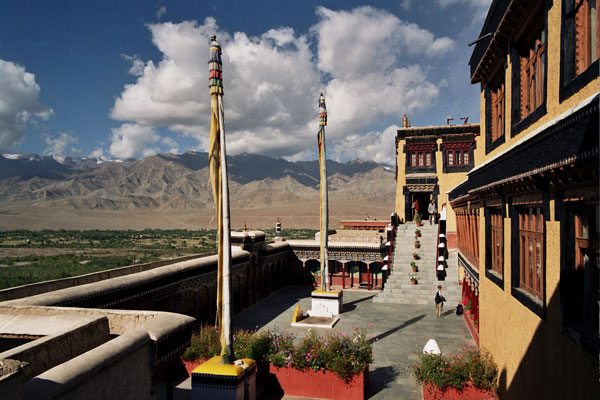
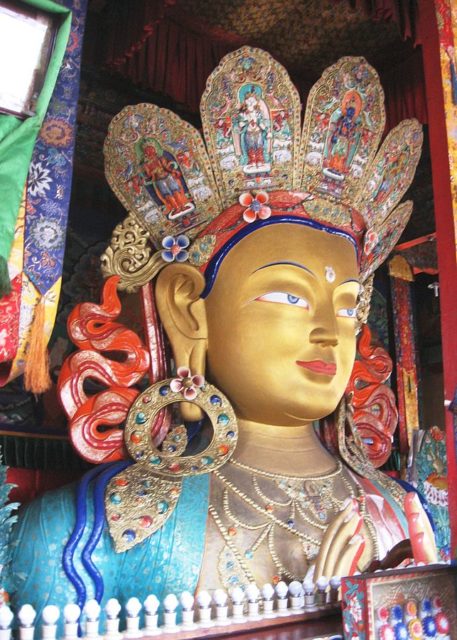
The Maitreya (future Buddha), one of the most treasured Buddhist items in the complex, was erected to commemorate the visit of the 14th Dalai Lama in 1970.
Here Buddha is unusually portrayed as seated in a lotus position rather than his common representation as standing or in a sitting posture on a high throne. It took four years to build the Maitreya Buddha and it’s made of clay, gold paint, and copper.
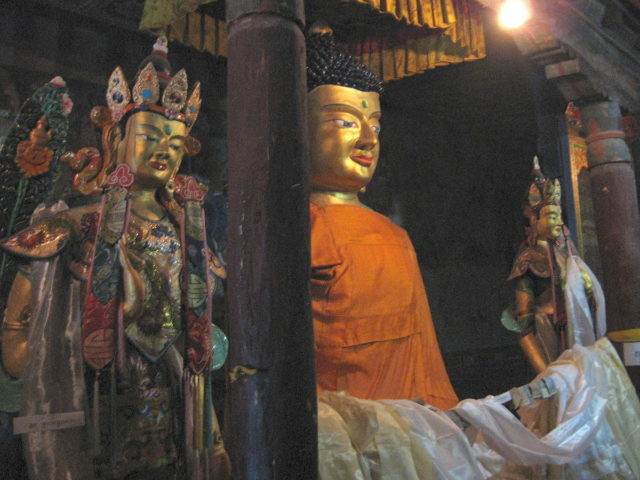
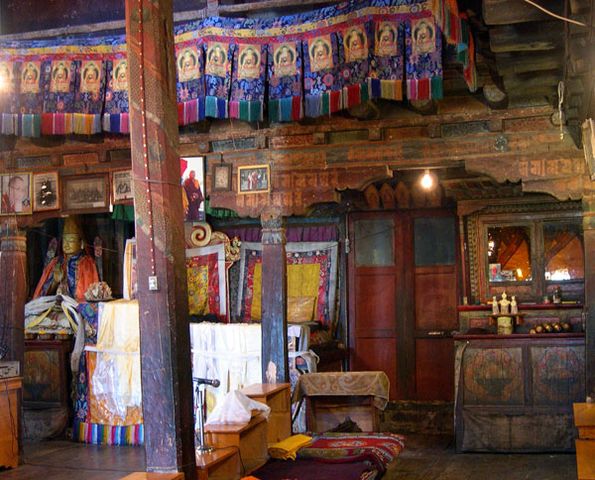
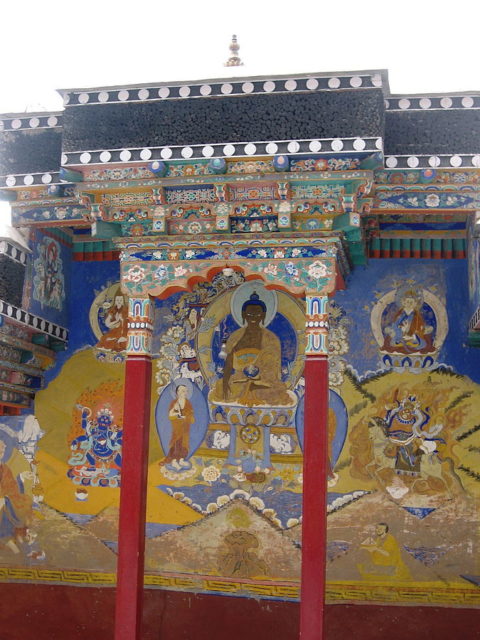
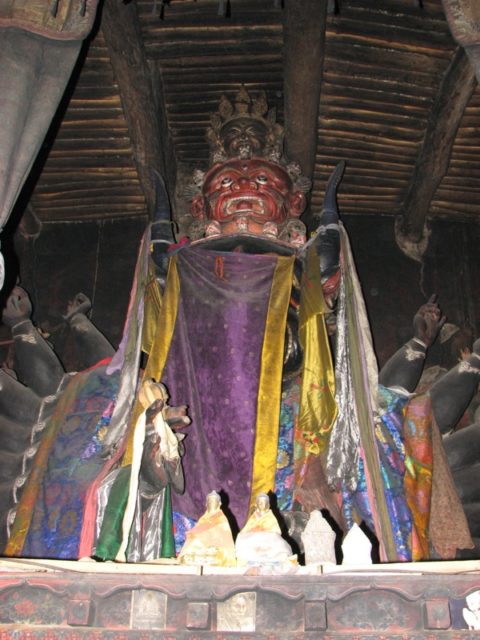
The top level of the monastery complex houses the Lamokhang temple, which stores numerous volumes of scriptures; only men are allowed entrance in these facilities. Big stupas and mani walls lurk at the entry and a small room above the temple is being used as a school room to teach some pupils chosen as lamas. The top floor also houses the official residence of the incarnate lama of the monastery. A large pillar engraved with the Buddha’s teachings is situated there as well.
The complex has a number of white-washed huts which house around 120 monks and nuns. Red and ocher are the other two colors that dominate the facades of complex buildings. For ages, Thikse has been a sacred Buddhist site, opening out to the astounding view of the Indus Valley.
